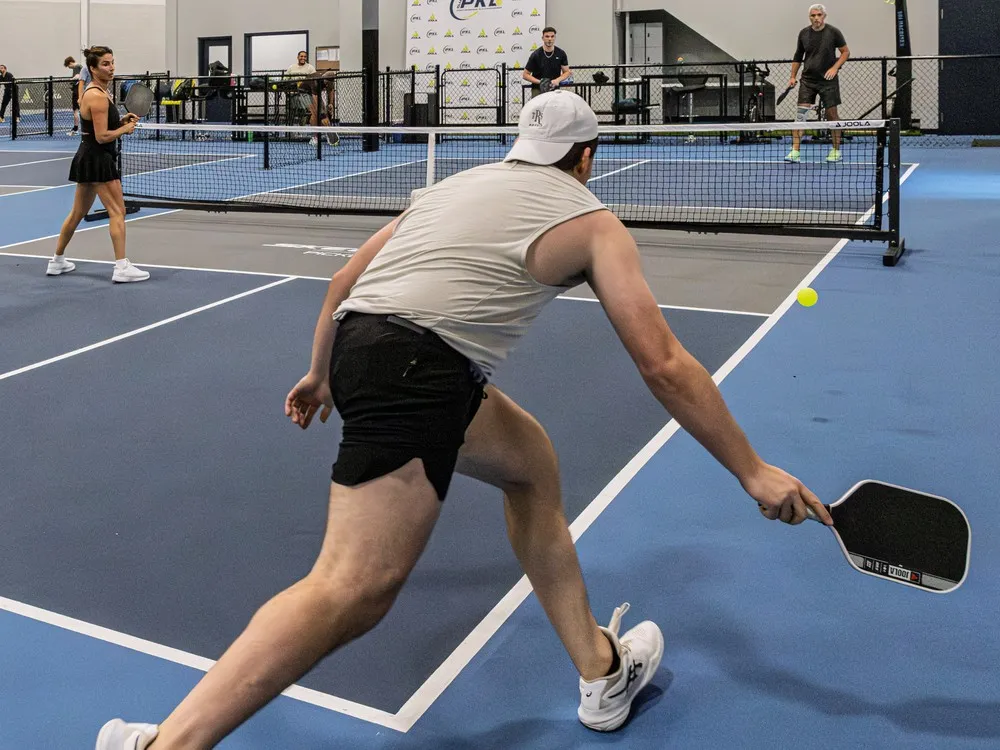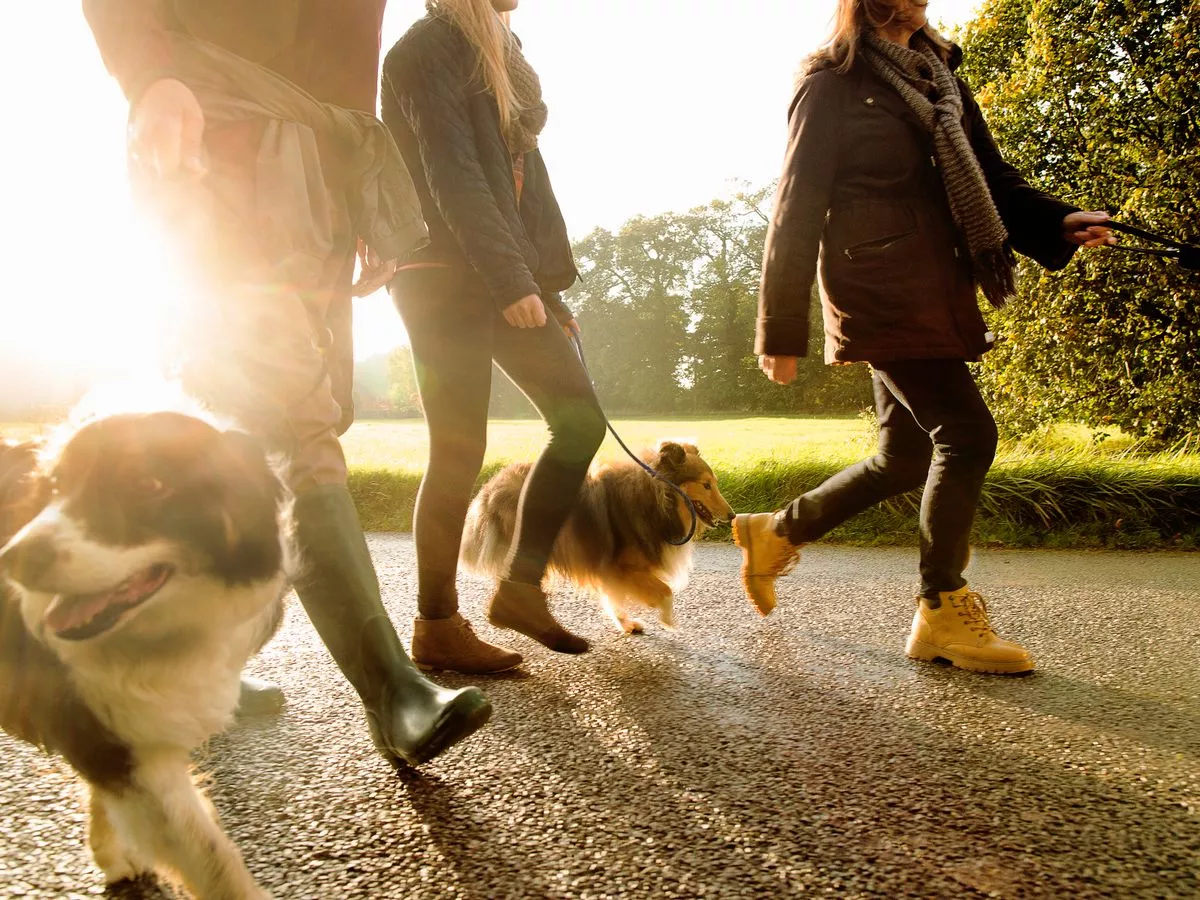Copyright montrealgazette

Advertisement 1This advertisement has not loaded yet, but your article continues below. People play pickleball at Club PKL in Montreal on July 28, 2025. Striving to move with confidence and competence won’t steer you wrong no matter your age, Jill Barker writes. Photo by Dave Sidaway /Montreal GazetteReviews and recommendations are unbiased and products are independently selected. Postmedia may earn an affiliate commission from purchases made through links on this page.Article contentPhysical literacy is a term normally associated with school-age children. But there’s a growing consensus among health and exercise professionals physical literacy should be extended to an adult population.Sign In or Create an Accountor View more offersArticle contentBroadly defined as “the motivation, confidence, physical competence, knowledge and understanding to value and take responsibility for maintaining purposeful physical pursuits/activities throughout the life course,” physical literacy is the syllabus for physical education in schools.Article contentArticle contentAdvertisement 1Story continues belowThis advertisement has not loaded yet, but your article continues below.Article contentIn children, learning basic athletic movement patterns and skills like running, jumping, skipping, kicking, throwing, catching, swimming, skating, riding a bike, swinging a racquet and or bat, etc., are key to building the proficiency and confidence to engage in a variety of physically active pursuits. Theoretically, these competencies are supposed to lead to a lifelong enjoyment of a healthy, active lifestyle.Article contentYet, according to ParticipACTION, only 49 per cent of Canadians age 18-59 meet the minimum recommendation of 150 minutes of moderate to vigorous physical activity a week. That number drops to 33 per cent in the 60-79 age group, leading health experts to suggest physical literacy needs to be reintroduced to adults.Article content“Although the application of physical literacy has been embraced, most of the efforts to engender physical activity and increase physical activity are targeted toward youth,” said a team from the School of Health and Exercise Sciences at the University of British Columbia in a recent article published in Applied Physiology, Nutrition and Metabolism.Article contentAdvertisement 2Story continues belowThis advertisement has not loaded yet, but your article continues below.Article contentThey’re not alone in their opinion physical literacy is important for all ages, but experts also agree the principles introduced to children need to be modified for adults. As such the discussion is continuing as to what physical literacy means for those in their second half of life.Article contentRead More Fitness: Prehab your aching joints in advance of surgery Fitness: What makes your running shoes super? Advertisement 1Story continues belowThis advertisement has not loaded yet, but your article continues below.Article content“Within an inactive older adult population, the primary interest may not be kicking or throwing skills, but rather the retraining of functional skills that will assist in maintaining physical independence and preventing frailty,” said a collaborative team of professionals working on developing a physical literacy model for older Canadians.Article contentIdeally, experiences in sport and physical activity accrue over a lifetime, effectively building on the physical literacy first gained through formal physical education classes at an earlier age. But not everyone had the same opportunity to build the competencies and confidence needed to learn a new activity, join a recreational sports league or try the latest fitness fad. For those people, physical literacy needs to be retooled to apply to all stages of the lifecycle.Advertisement 1This advertisement has not loaded yet.Trending Quebec brings hammer down on doctors by adopting special law to force deal News Hidden Game: Stop us if you've heard this before, but Dobes keeps winning games for Canadiens Hockey Inside Out Canadiens' Patrik Laine out 3-4 months after surgery for muscle injury Hockey Inside Out Ivan Demidov ad for poutine restaurant signals new marketable era for Habs players Hockey Inside Out For the first time in 38 years, Montreal bus drivers, métro operators to launch strike action Local News Advertisement 2AdvertisementThis advertisement has not loaded yet, but your article continues below. Article contentIt’s not only the physical aspect of an active lifestyle that a large section of the adult population is missing out on. Social engagement is an often overlooked benefit of being active and is an important motivator for inactive adults searching for connection with similarly age people with like interests. And since meeting new people is often a path to new experiences, the physical and mental benefits of engaging with others can’t be overlooked when it comes to defining physical literacy for adults.Article contentAs such, community recreation associations, fitness and sports clubs and other organizations that promote sport and physical activity should reflect on how well their services fulfill the needs of adults who want to develop or rekindle their athletic skills. That said, as an adult physical literacy is no longer facilitated by others. Instead, it is almost entirely self-driven.Article contentAdvertisement 3Story continues belowThis advertisement has not loaded yet, but your article continues below.Article content“It is apparent that physical literacy is important for sustained participation in physical activity, but development of physical literacy for adults can occur through unstructured movement pursuits, such as recreational activities, daily routines, social interactions, and community involvement, in addition to structured movement pursuits such as sport, exercise, rehabilitation programs, health-care visits and education programs,” said a group of experts from McMaster University in Hamilton.Article contentThe first step in your physical literacy journey is to decide what benefits of being physically active are most important for you. If you’re unsure, consider buying into a definition of physical literacy appropriate for latecomers; “the ability to move with confidence and competence using all the physical assets one has at their disposal at any given point in time across varying contexts.”Article contentAdvertisement 4Story continues belowThis advertisement has not loaded yet, but your article continues below.Article contentGiven your physical assets may change over time, continually striving to move with confidence and competence won’t steer you wrong no matter your age. If that means taking golf, pickleball, dance or swimming lessons, hiring the services of a personal trainer to teach the basics of an effective gym workout or guiding you toward specific programs designed for novice exercisers, then search out the expertise and/or opportunities to build the type of movement mastery that builds the self-assurance and proficiency you need.Article contentPhysical literacy isn’t limited to lifelong exercisers whose commitment to an active lifestyle never faltered. It’s a dynamic concept that changes over time. Most people’s journey with physical activity has encountered several Interruptions and false starts that whittled away confidence in their athletic abilities. It’s never too late to learn a new sport, try a new fitness class, rekindle a love of competition or move your body in new ways.Article contentAdvertisement 2This advertisement has not loaded yet. Featured Local Savings



